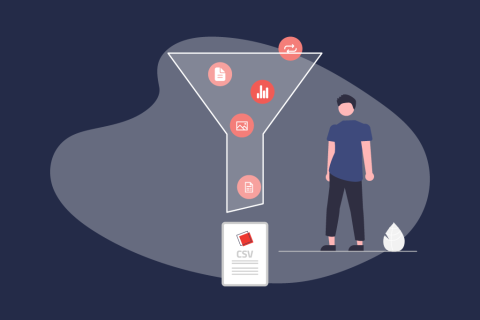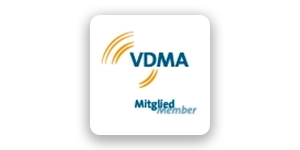Product Communications
Product Data Exchange Made Easy – This is How ETIM Works

Content
ETIM: The Open Standard for the Classification of Your Products
What is ETIM?
ETIM stands for “Electrotechnical Information Model,” a classification system that unifies product descriptions from commerce, the industries, and construction. It’s a universal standard which can present product data in a neutral manner and independent of specific manufacturers, media formats, and languages. Equipped with this classification, retailer and manufacturer speak a common language, hereby facilitating and accelerating communication even on an international level. Initially, with the founding of “ETIM Deutschland e. V.” in Germany in the year of 1999, the open standard has exclusively been used in the field of electrical engineering up until 2015. By now, the classification system has also been adopted by many other sectors such as the “Heating, Ventilation, and Air Conditioning” industry (HVAC) and “Tools, Hardware, and Site Supplies” industry (commonly abbreviated as WEBA in German, but there is no direct equivalent used by the English-speaking engineering communities). With the founding of “ETIM International” in 2008, the classification has started to receive a very high acceptance rate and recognition across all of Europe. In general, it’s a free standard so that you can utilize its data model without any license fees; you can also opt for a paid ETIM membership if you want to actively participate in the continuous optimization and refinement of the model.
How does ETIM work?
For the classification with ETIM, your products are assigned to corresponding article classes in a flat hierarchy. In order to achieve an exact mapping of all individual products, the differentiation of classes is very meticulous, resulting in a rich number of classes. Finally, all these classes are summarized into thematic groups, but these groups only serve the purpose of providing a more convenient overview and better internal organization. All in all, the current version 9.0 of ETIM consists of a total of 5,554 classes for the following 5 sectors: “electrotechnical” (E), “HVAC and plumbing” (W), “building materials” (B), “shipbuilding” (M), and “Tools, Hardware, and Site Supplies” (T).
Every class contains a well-defined set of technical attributes. You can use these attributes to describe all products assignable to this class. In order to also guarantee that the inserted product information is uniform and well-structured, the attributes come in the form of selection lists so that all you need to do is select from a list of pre-defined input values. In case of numeric values, you can select the metric unit. Thanks to the unified language, terminology, and structure, it’s very easy to identify, describe, and compare products. This reduces a lot of effort when generating offers or commissions and simplifies the selection process for compatible products, among other things.
In short, you can divide the process of classification and description for your products into three steps:
1. Assigning products to product classes
2. Assigning the attributes of the class to the product
3. Describing the product using the list of pre-defined values
In ETIM expert panels and working groups, members actively work on optimizing and developing the model further. Accordingly, this universal solution enjoys a high acceptance rate and international recognition, together with high data relevance and usability in your daily business.
BIM meets ETIM: The Future of Digital Product Communication
BIM (Building Information Modeling) is the method which allows all companies active in construction to visualize a building across its entire life cycle using a 3D model. With it, they can achieve an optimal and efficient collaboration for all construction projects. The relevant information required to do so comes in a standardized terminology and has a uniform format. You can learn more about how this works in our blog entry “What is BIM? Building Information Modeling in Simple Terms.“
BIM is an integrative, digital planning method for construction of buildings and infrastructure. ETIM, on the other hand, offers a standardized classification and well-defined, uniform product attributes. Applying the classification and attribute structure of the ETIM standard to BIM models is what enables a simple identification of technical products and facilitates their integration into your planning process. Bringing together ETIM and BIM makes it possible to optimize, digitize, and carry out the efficient planning and realization of construction projects. This, in turn, translates into a higher customer satisfaction rate, lower costs, and faster project completions. A clear advantage for all parties involved, be it manufacturer, retailer, or planner.
BMEcat and ETIM: How a Central Structure Facilitates Product Communication
While ETIM takes care of the classification as well as the attribute structure, thereby securing the uniform description of your products, BMEcat is a standardized format for the exchange of catalog data between electronic catalogs (commonly referred to as e-catalogs). The combination of both standards renders possible a simple and efficient exchange of product data between manufacturers, retailers, and even customers. Besides ETIM, BMEcat is also the go-to standard format for the transfer of product data for ECLASS, profiCl@ss, and the XML format ARGE Neue Medien. You can find further information about BMEcat and an overview of its benefits in our blogpost “BMEcat – A Universal Exchange Format for Your Product Data.”
How does PIM Software Support You in the Classification of Products?
The PIM system is the central system for managing your product data. And since it contains all your product data, it already contains everything you need for ETIM. By integrating the ETIM classes that are relevant to your industry and products, you can efficiently classify every article while also maintaining a good overview, i.e. you can handle the assignment of products to ETIM classes with PIM. You can also do so across different ETIM versions. Thanks to these relations, the corresponding ETIM descriptions are directly stored at the product and can be accessed and edited using the PIM system. Your user-generated and already well-maintained product attributes can be linked automatically to the respective ETIM attribute, so you can manage everything from a single source without any redundant data management.
We from eggheads support you with our knowhow and 30 years’ worth of experience in product data and classification systems when it comes to building your own ETIM structure, the mapping of your product data, as well as data distribution with our universal BMEcat export. A compact solution thanks to which you don’t need to rely on any specialized software for designing and creating e-catalogs. Does this topic resonate with you? We’re always happy to have an exchange over a virtual cup of coffee, without any commitments on your end. Make an appointment for a personal conversation with us.
From Our Blog
You may also be interested in the following articles







